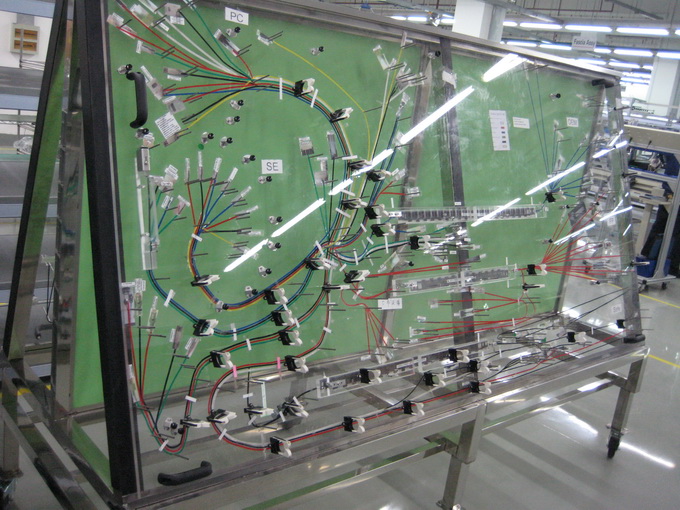When Expectations Seem Impossible
Hiring and retaining skilled electrical engineers with experience in wire harness design and development is increasingly becoming a challenge.
Even when you have finally put the right engineering team in place, having enough engineering time available to win the next big order is a challenge.
What if you could outsource engineering work to a skilled and competent partner?
Listens to its customers and we have heard that crucial engineering resources are being cut,while at the same time, your customers are demanding custom-engineered solutions delivered faster.
GI Electrotech(CZ) has skilled design and engineering resources ready to help and ready to land the next big order.

Working with designers to advise on the best electronic connectors & cable assembly solutions for your needs.
We work with a wide network of trusted manufacturers to ensure the designers’ exact requirements are always met.
Wire Harness Design
A wire harness is typically designed to simplify the manufacture of a larger component, and is designed based on the geometric and electrical requirements of the equipment it is to be installed in.
Wire harnesses are commonly used in the electronics industry, the automotive industry, in the manufacture of construction machinery and industrial equipment, as well as in the manufacture of white goods such as washing machines and dryers, refrigerators, and other household appliances.
The wire harness simplifies the building of these larger components by integrating the wiring into a single unit, or several units, for “drop-in” installation. By binding the many wires, cables, and subassemblies into a harness, the OEM or installer only has one component to install. In addition, a wire harness allows the completed assembly to be better secured against the effects of abrasion and vibration, and by constricting the wires into a non-flexing bundle, usage of space is optimized.
Once a design is established, the process of building a wire harness starts with the development of a schematic that is used to create the manufacturing paperwork and the assembly board for the harness. The assembly board, or pin board, is a full size diagram of the harness and shows all of the components and their location and also serves as the workbench for the harness. The wires needed for the harness are supplied on a master reel and are cut to the desired length and identified with printing or labeling if necessary. Once cut to the proper length, the wires are stripped to expose the uninsulated conductor and then fitted with any required terminals or connector housings. These wires and components then are put on the pin board and are bound together by any necessary straps, cable ties, cable lacing, sleeves, tapes, weaves of extruded string, or any combination of these.
In spite of the desire to increase automation, wire harnesses, in general, continue to be manufactured by hand because of the many different processes involved.
Wire Harness Assembly Process
These processes include but are not limited to the following:
Installing the wires and/or subassemblies on the assembly board.
Routing wires and/or subassemblies through any required sleeves.
Applying wraps, ties, or tapes, particularly on any branch-outs.
Crimping terminals onto wires, especially if more than one wire goes into one terminal.
It is difficult to automate the processes used in the building of a wire harness. Manual production remains more cost effective than automation, especially with small batch sizes. Pre-production or kitting of a harness can be somewhat automated.
This would impact the following steps:
Cutting and identifying individual wires (cutting/stripping machine).
Crimping terminals onto one or both sides of the wire.
Partial plugging of wires prefitted with terminals into connector housings.
Soldering of wire ends (solder machine).
Twisting wires.
See our blog post on why complex wire harnesses cannot be fully automated for more information.
Wire Harness Testing
Testing the electrical functionality of a wire or cable harness can be done with the aid of a test board. The test board is pre-programmed with the required electrical characteristics, and the completed harness can be plugged into the test board and tested individually or in multiple numbers.

